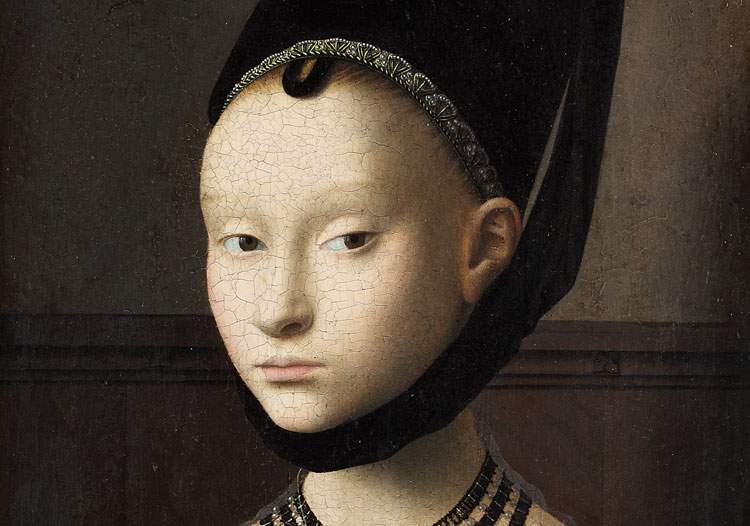Amsterdam, a major exhibition on Renaissance portraiture at the Rijksmuseum
A major exhibition on Renaissance portraits from all over Europe: this is the one to be held at the Rijksmuseum in Amsterdam from October 1, 2021 to January 16, 2022. Entitled Remember me (in Italian it has been rendered as “Non ti scordar di me”), it will offer the Dutch and international public a selection of about one hundred masterpieces by great artists from the history of international art, including Hans Holbein, Albrecht Dürer, Piero di Cosimo, Hans Memling, Antonello da Messina, Lorenzo Lotto, Paolo Veronese, Petrus Christus, and many others, with loans from the Kunstmuseum in Basel, the National Gallery in London, the Prado Museum in Madrid, Palazzo Madama in Turin, and the National Gallery of Art in Washington. This is the first major exhibition of Renaissance portraits in the Netherlands.
The exhibition will trace the history of portraiture between the 15th and 16th centuries. From ancient times, the main purpose of portraiture was to keep the memory of the effigy alive, and towards the end of the 15th century, the time of the first great flowering of Renaissance portraiture, this pictorial genre had a considerable following both north and south of the Alps. Despite some major regional differences, the common denominator of these works of art was above all the human need to remember and be remembered.
As is still the case today, people who asked to be depicted in a portrait tended to appear in the best possible way and to convey an idealized image of themselves. So every element of the composition was well thought out: facial expression, posture, clothing, symbolic elements, and background. While some placed the beauty of the effigies in the foreground, others emphasized their authority and social prestige. Around 1533, Charles V, emperor of the Holy Roman Empire, for example, wanted to emphasize his own power by having himself portrayed in the guise of a Roman emperor. Maarten van Heemskerck’s self-portrait, in which the painter depicted himself intent on painting, is then a testimony to the social revenge of artists in Renaissance society. Through themes such as beauty, power, ambition, love, family, thirst for knowledge and faith, Remember me thus highlights how Renaissance men and women wanted to look and be remembered.
The exhibition brings together portraits from museums throughout Europe and the United States. The Portrait of a Maiden (circa 1470) by Petrus Christus, a masterpiece of the Northern European Renaissance from the Gemäldegalerie, will leave the renowned Berlin museum for the first time since 1994. Antonello da Messina’s Portrait of a Man (1476), on loan from the Museo Civico d’Arte Antica di Palazzo Madama in Turin, also stands out among the many works on display. The display will also include the funerary monument of Isabella of Bourbon (Jan Borman II and Renier van Thienen, 1475-76) from the Cathedral of Our Lady in Antwerp, which, for the occasion, will be reunited with the ten Pleurants from the Rijksmuseum (on permanent loan from the City of Amsterdam). There will be no shortage of works by Albrecht Dürer: the Portrait of an African Man (1508) from the Albertina in Vienna and the Portrait of a Young Woman with Loose Hair at Prayer (1497) from the Städel Museum in Frankfurt. Several works then come from the Kunstmuseum Basel, including portraits of Jakob Meyer zum Hasen and his wife Dorothea Kannengiesser (1516) by Hans Holbein II. Finally, other paintings in the exhibition may include Jan Jacobsz Snoeck’s Portrait of Jan Jacobsz Snoeck (circa 1530) by Jan Gossart from the National Gallery of Art in Washington and the famous self-portrait of Sofonisba Anguissola (circa 1556) from the Muzeum-Zamek in ÅaÅ„cut.
The exhibition design is by Jean Michel Wilmotte, while Irma Boom handled the graphic design. The exhibition is accompanied by a richly illustrated catalog, whose graphic design is also by Irma Boom. The volume, published in English and Dutch, will be on sale from the opening day of the exhibition. The exhibition was made possible thanks to the support of Ammodo, the International Circle of the Rijksmuseum and the Cultural Heritage Agency of the Ministry of Education, Culture and Science.
Image: Petrus Christus, Portrait of a Maiden, detail (ca. 1470; Berlin, Staatliche Museen)
 |
| Amsterdam, a major exhibition on Renaissance portraiture at the Rijksmuseum |
Warning: the translation into English of the original Italian article was created using automatic tools. We undertake to review all articles, but we do not guarantee the total absence of inaccuracies in the translation due to the program. You can find the original by clicking on the ITA button. If you find any mistake,please contact us.




























